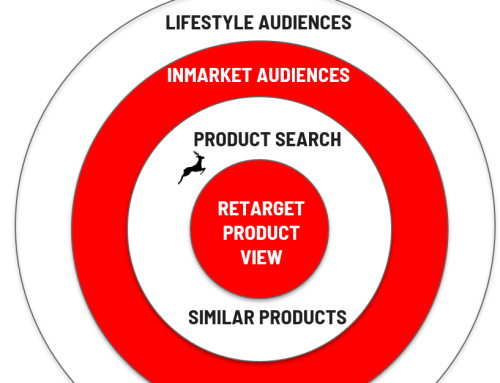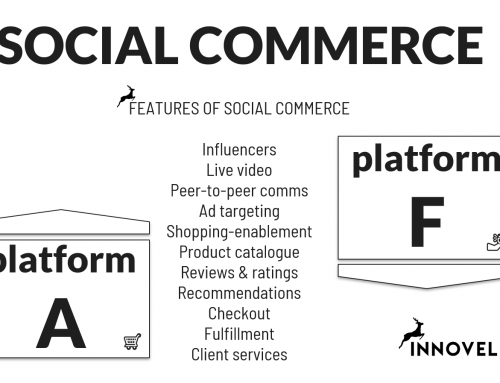
The key to successfully marketing on Amazon as a Seller is right there in front of your eyes, haven’t you noticed? It is a bit like the forest you can’t see because the trees are blocking the view. Although we tend to imagine that success is ruled by some algorithm we can’t understand, once you realize where your own objectives actually coincide with Amazon’s and learn to work along some its principles of operational excellence, customer obsession and long-term thinking, you will significantly increase your chances of success on the marketplace.
What Amazon success looks like.
As a merchant having set up your account as a Seller on the marketplace, your main interface with Amazon is “Seller Central”. It is your dashboard and your management interface. Did you realize that the components of the dashboard are direct indications of what Amazon considers the dimensions of your success? Let’s have a look at it in depth.

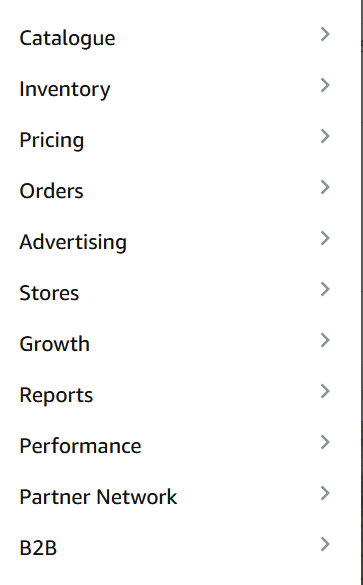 The seller central interface is directly telling us what is important and what we can work on. The top line dashboard shows the number of orders, sales today, buyer messages, buy box wins, money earned, inventory score, (the IPI: Inventory Performance Index) and the effect of your promotions. To sum it up, Amazon is telling us what matters: sales, customers, competitiveness, balance of earnings (sales minus cost of advertising) and stock.
The seller central interface is directly telling us what is important and what we can work on. The top line dashboard shows the number of orders, sales today, buyer messages, buy box wins, money earned, inventory score, (the IPI: Inventory Performance Index) and the effect of your promotions. To sum it up, Amazon is telling us what matters: sales, customers, competitiveness, balance of earnings (sales minus cost of advertising) and stock.
Rephrasing those provides us with the following 5 key points to Amazon success:
- Maximizing sales
- Winning the buy box
- Minimizing stock (managing the IPI)
- Providing excellent customer service
- Controlling the ACOS (Advertising Cost of Sales)
Most of them are not things you just fix once and for all. The Amazon game is a long-term project where you will have to constantly monitor and maintain your key ratios. A winning Amazon marketing strategy is one in which the ratios are stable and gradually improving all the time.
Flow-and-grow rather than Stop-and-Go
One of the worst things that can happen to your account is if it goes into a stop and go mode. I have seen this way far too often working with Amazon Sellers over the past few years. It goes something like this:
- Get the product listings up
- Put some stock in
- Push promotions and advertising
- Get sales going
- Run out of stock
- Lose the buy box
- Panic
- Restock
- Return to 3)
In a stop and go scenario, the seller needs to restart the marketing machine every time products have run out of stock. Bad for users, bad for Amazon, bad for you.
Let’s embark instead on a flow and grow strategy where the aim is to create continuous improvement by working on each of the 5 success points one by one, as we explore below.
Maximizing sales
Of course, you want to maximize your sales, everybody does. But have you realized that Amazon also wants you to? Sales velocity of a product is one of the key signals Amazon works with. It helps the platform propose the best performing products and thereby maximize its own sales. This also typically has a positive impact on your IPI because your days-in-stock will be lower.
At the level of a merchant, this focus on best-sellers and maximized sales has some concrete implications. Let’s say you have a catalogue of 10 products and one of them has much higher sales than the others. Your best strategy will be to enhance advertising on your best-seller to make it sell even more. On your less performing products you should focus on content optimization and only use advertising defensively until you get some kind of traction.
Bet on your best products.
Winning the buy box
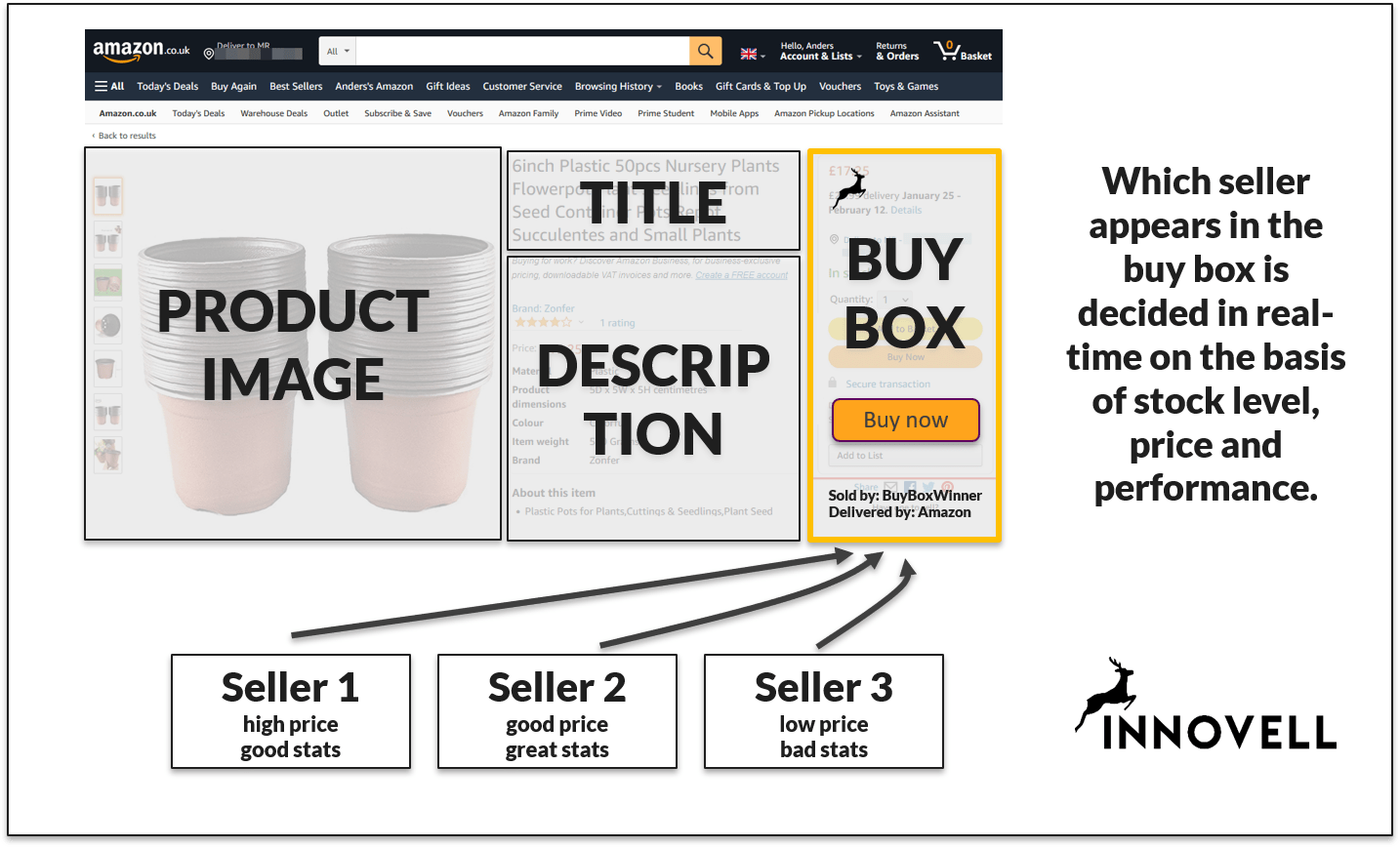
In order to sell your products, they need to appear in the “Buy Box” as often as possible. This is something end-users on Amazon don’t realize: the product page does not belong to the Seller, there can be several different Sellers proposing the exact same products with different prices and delivery settings. At the time of an end-user visit, Amazon will decide which Seller will “win the buy box”. The main determining factor is the price.
The illustration below shows you where to find the buy box on the right-hand side of a product detail page allowing you to buy a product in a single click. Being a marketplace, Amazon can have a number of different sellers distribute the same product. But there is only one product detail page for each ASIN (product code), and on that page, only one of the sellers is put forward in the buy box.
Make that be you!
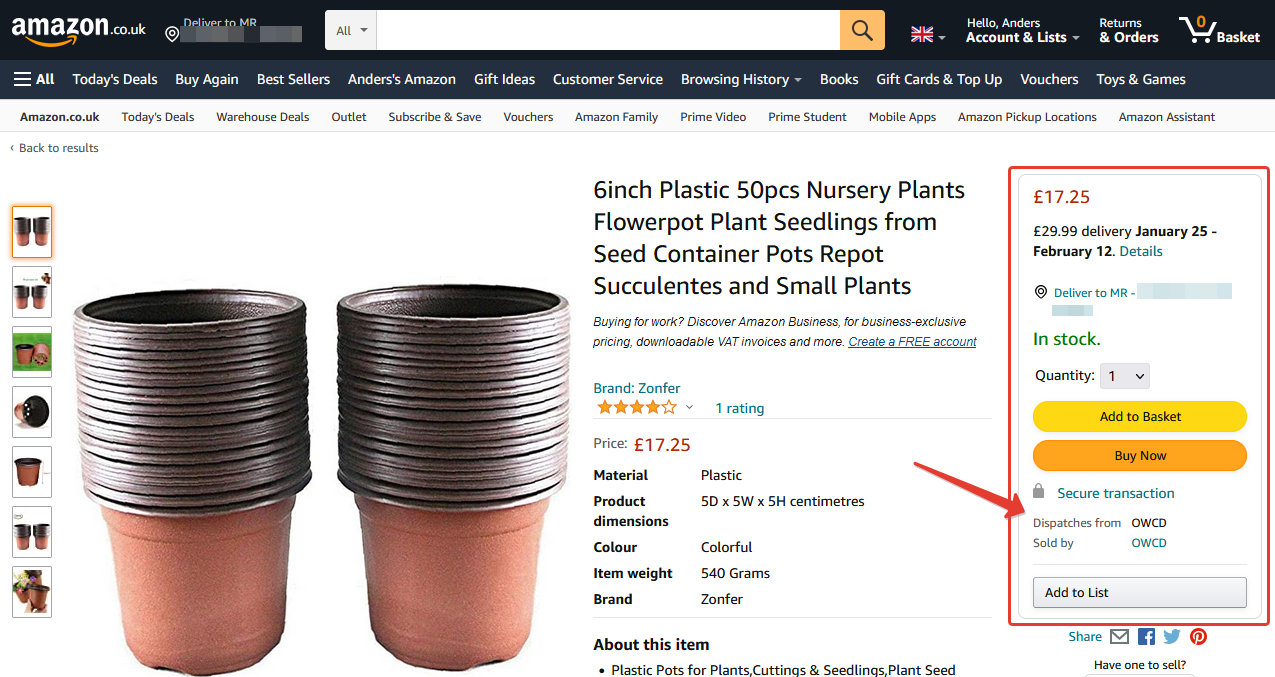
The buy box is indicated by the red rectangle and the arrow points to the winner of the buy box on this product page.
Source: Amazon.co.uk
Amazon makes the best performing seller appear, so the end-user doesn’t have to make that decision. Amazon’s objective with this exercise is to provide an excellent user experience by selecting the best provider of a product. This arbitrage made in real time is of course executed by an algorithm, and the signals it takes into account are stock level, price ranking, sales history, past user experience, past delivery performance. Obviously, the capability to deliver to your location is the very first filter that is applied. Be in stock, be distributable.
By having the right price, a low return rate and a compelling product listing, you increase your chances of winning the buy box. Optimizing product listings serves more than one purpose: it helps the user in the buying process and it helps the Amazon algorithm understand what keyword searches the product should appear on.
Minimizing stock (but maximizing IPI)
On the Seller Central dashboard, Amazon shows sellers their IPI score, the Inventory Performance Index. This score gauges the way inventory is managed over time by sellers using FBA (Fulfillment by Amazon), and therefore have inventory in Amazon warehouses. Merchants of course pay for the warehouse occupation, so that is an interesting revenue source for Amazon, right?
No, wrong.
Amazon charges for your inventory, but if it could carry stock only on the products which make a margin when you sell, it would earn more. Additionally, Amazon has a huge storage challenge due to the physical and invariable nature of warehouses and its strong growth. It is in both Amazons and your interest to optimize inventory to only occupy space for goods that are sold frequently. To further optimize its warehouse resources, Amazon has even created a new mechanism to put warehouse space on auction.
Amazon describes IPI, the Inventory Performance Index as a metric for how efficient and productively Sellers manage their FBA inventory via a number of factors. The key factors it measures are the following (Source: Amazon):
- Avoiding excess and aged inventory.
- Long-term storage fees.
- Speed at fixing listing problems (that immobilize stock)
- Right levels of stock of popular products
Most sellers on Amazon will appreciate the IPI as a score for how they are doing. A stop-and-go account will have a low IPI and it will take time to rebuild it after having been out of stock. What most sellers don’t realize is, that it is one of the quality signals that Amazon uses. It can influence whether you win the buy box and may even have an impact on your ranking in search results.
Additionally, the IPI can be a cost saver. You pay for the amount of stock and the time it stays in Amazon warehouses. Amazon inventory space is never unlimited and non-moving inventory is not efficient for anybody. Amazon charges for it but also penalizes non-efficient stock management. Your objective is to be lean and efficient. Another objective that serves both you, Amazon and the end-user.
Make your stock management lean.
Providing excellent customer service
Amazon is obsessed with the user experience. It doesn’t do surveys of user satisfaction, though. Instead, it obsessively measures any signal that can be interpreted as a success parameter for the user experience. User reviews and ratings, return rates, customer service requests, speed of dispute resolution.
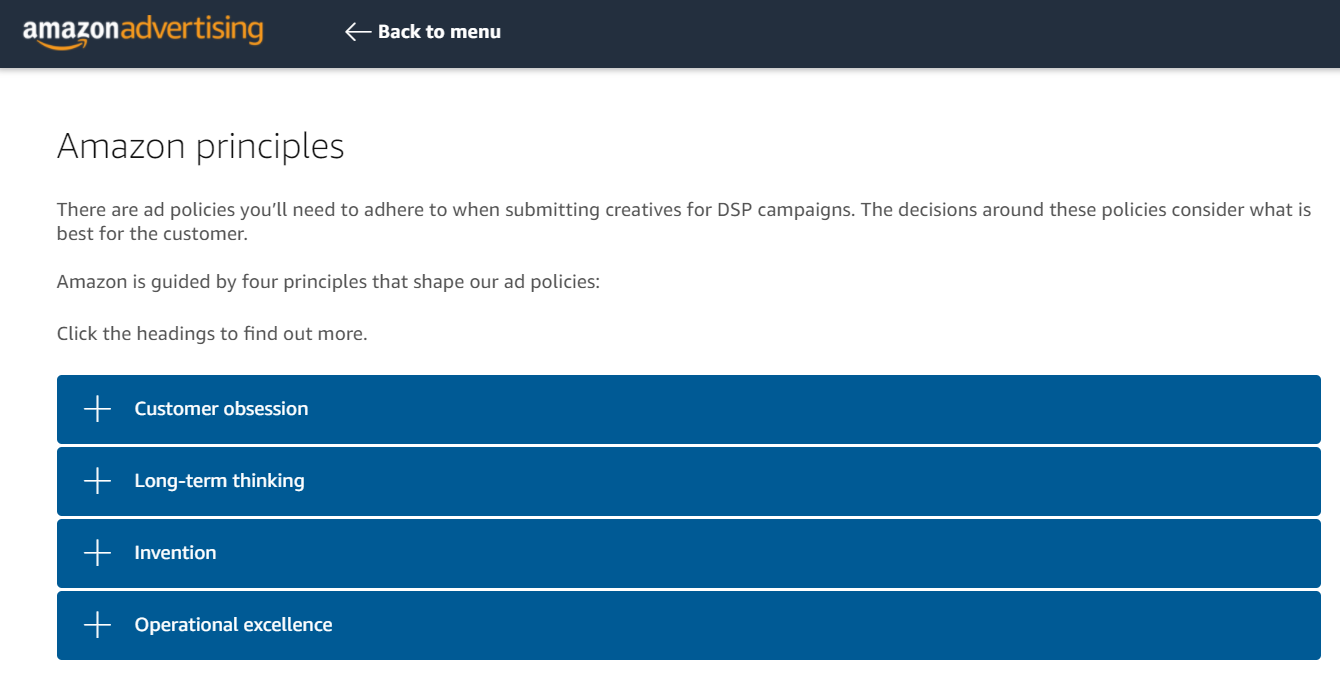
Source: Amazon DSP training material. https://learningconsole.amazonadvertising.com/
The best way to influence those signals is simply to strive for excellence. But providing excellent customer service is both challenging and costly. It requires preparation, processes for problem resolution, fast intervention and sometimes generous return or refunding conditions.
So, will that investment pay off? Odds are it will help you win the buy box which can contribute to more sales on Amazon. It can also spill-over into your ratings and reviews and help boost conversion. It might even enhance your customer care in other distribution channels. So, don’t neglect or underprioritize customer service, it is one of the keys to success of your business in the long run, both on Amazon and beyond.
Make your clients happy.
Controlling the ACOS
Marketing your products on Amazon is practically impossible without advertising. “Products that sell themselves” is a concept of a distant past, don’t fall for it, however proud you are of your product development or research.
On Amazon, you don’t win if you don’t play the advertising game.
When you are just starting to sell on Amazon, you will need to invest a higher proportion of your sales in advertising. The ACOS at the outset might even be too high for you to turn a profit.
ACOS means Advertising Cost of Sales and is a metric primarily used in Amazon marketing. In other advertising we usually use the inverted value of ACOS, which is the ROAS: Return on Ad Spend. Both metrics score how much value you are getting out of your advertising. The reason for the adoption of ACOS by Amazon is probably found in the way Seller relationships are structured: a merchant sells on the platform and thus earns a balance to be paid by Amazon. The seller can use a proportion of that balance on advertising and will only receive the difference between total sales and advertising and other fees on its bank account.
As you learn from your advertising investment and from the outcomes of your campaigns, you can optimize accordingly to reduce investment for the same result or increase sales with the same budget. This will mean your ACOS goes down, but more importantly, your sales velocity goes up. At this stage, you should experience both an improvement in your buy box ratio and a rise in organic sales. The flow is kicking in. Amazon is more likely to show your product on relevant queries in its search results if you have ramped up your sales.
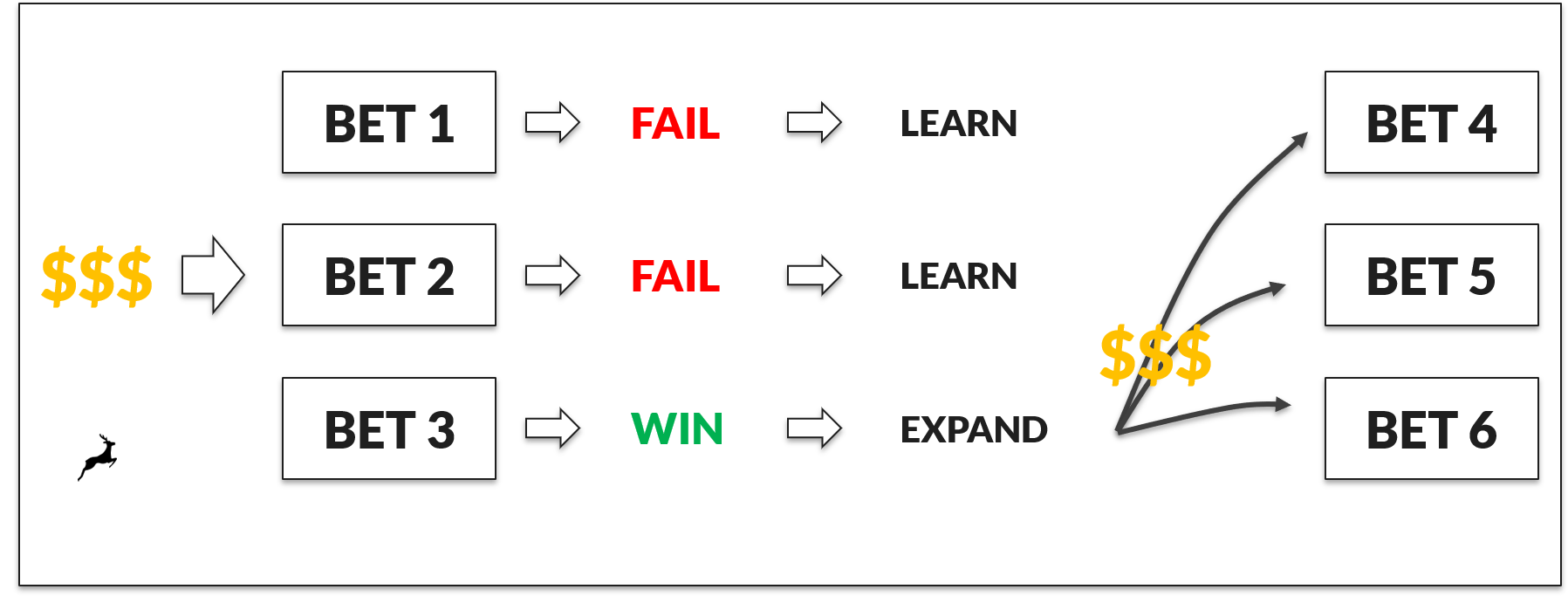
This mindset of investing to learn what works – making small bets all the time – is a great way to grow your account. You can bet on keyword targeting, on competitive products, on complementary products on past buyers, on non-buying visitors to your product pages. All of these can be performed inside the Amazon Sponsored Ads platform, and if you max out on that platform, there will be plenty more bets to do on the Amazon DSP, where targeting options are supercharged providing almost endless optimization levers.
But before we get carried away with all the potential customers, let’s remember that a high ACOS won’t be sustainable in the long run. In order to earn money a company generates margins on the sale of its products. The margin is the difference between the sales price, the cost of goods sold (COGS) and the costs of marketing. Gradually taking the ACOS down to a sustainable level while maintaining sales growth is the key to growing your account.
In reality, however, a much better measure of success is to take a wider view of your performance by looking at total ACOS (or tACOS/Tacos, as it is often called). Total ACOS better takes the derived benefits from advertising into account (more organic sales) and is a better measure of your success.
Optimize your advertising to reach a sustainable ACOS, then expand.
Position your products, then invest to learn and grow for the long run
As your product flows and your sales grow, you will need to maintain your level of customer service and your control of efficient stock levels. Remember, you are in it for the long haul. Your advertising bets will show you how and where to develop your account further and while this iterative process can be long, it can also put your business on track to conquering a market at a pace of 10, 15 or even 25% growth per month until you reach you market potential.
Being impeccable on price level, customer service and stock, and having faith in your strategy could steer your business to unprecedented heights. And the dashboard for your performance is right in front of your eyes in Amazon’s Seller central.


